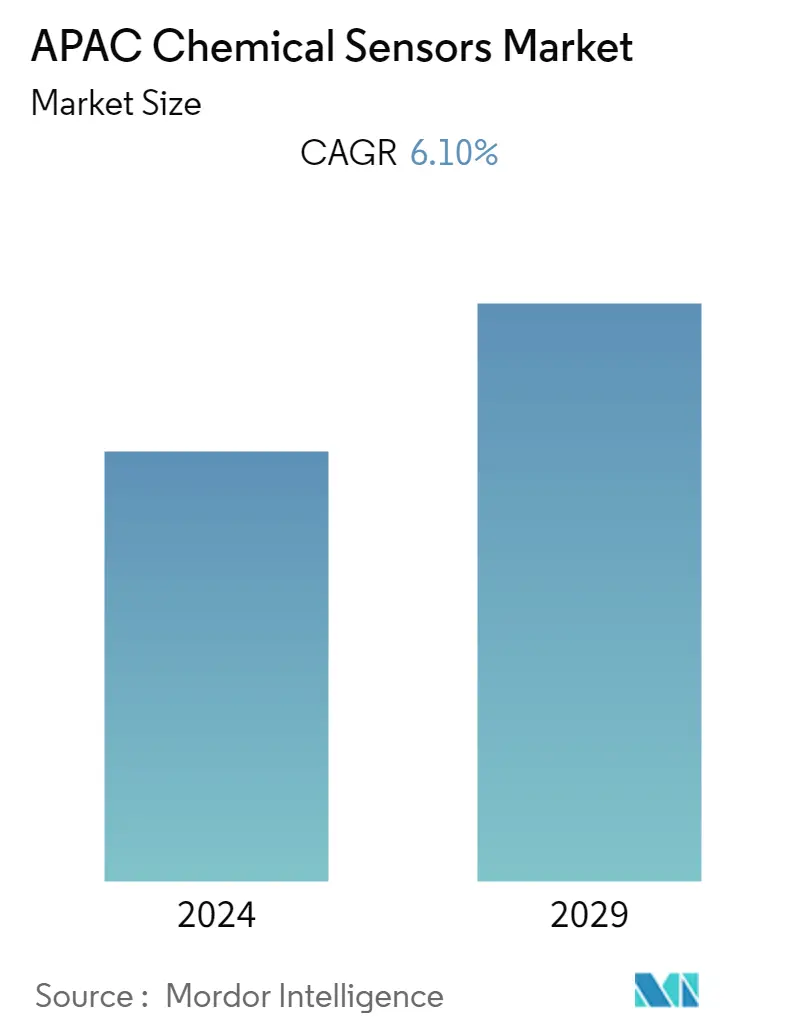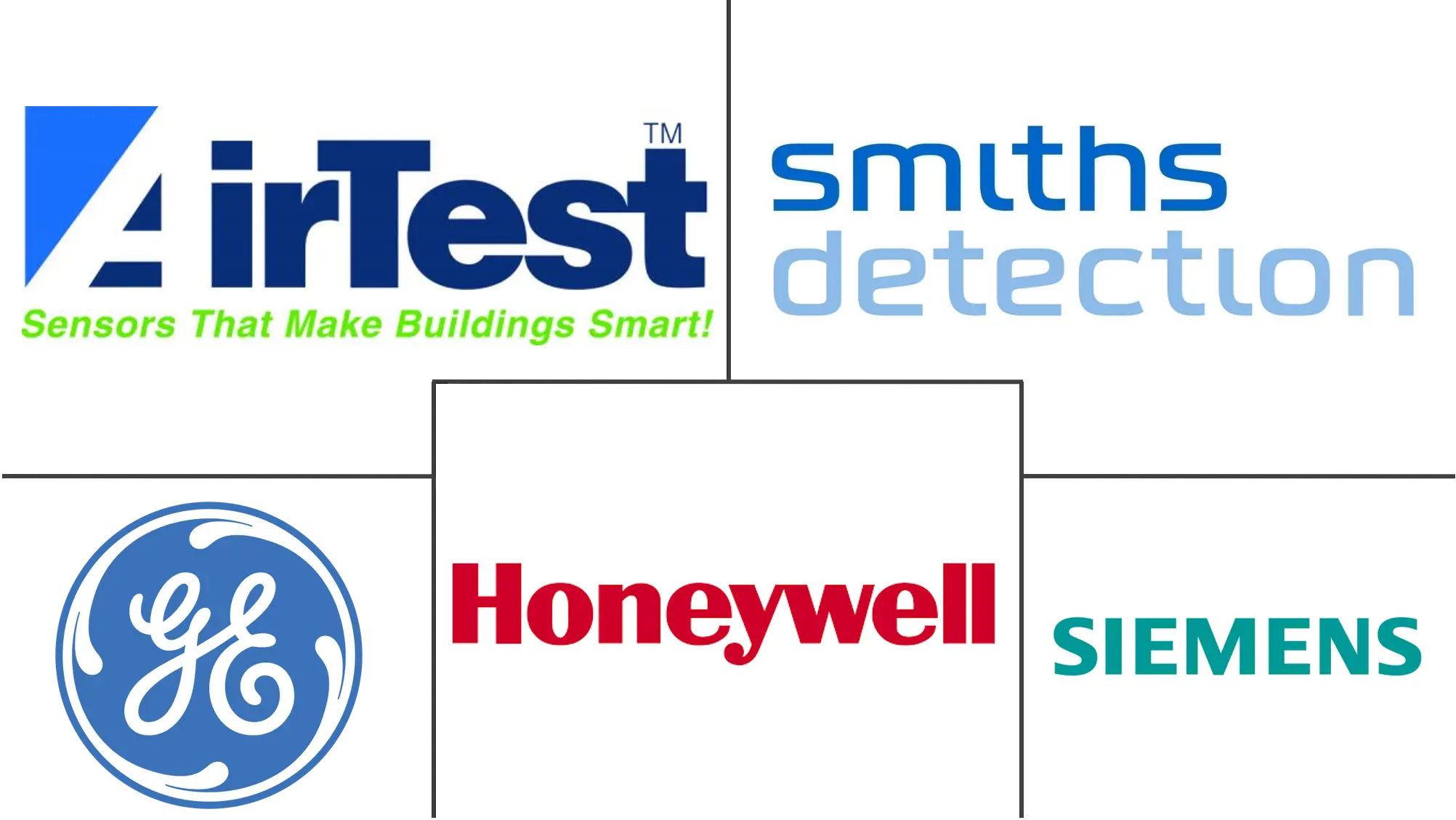Market Size of APAC Chemical Sensors Industry

| Study Period | 2019 - 2029 |
| Base Year For Estimation | 2023 |
| Forecast Data Period | 2024 - 2029 |
| Historical Data Period | 2019 - 2022 |
| CAGR | 6.10 % |
| Market Concentration | Low |
Major Players
*Disclaimer: Major Players sorted in no particular order |
Need a report that reflects how COVID-19 has impacted this market and its growth?
APAC Chemical Sensors Market Analysis
The Asia Pacific Chemical Sensors Market is expected to reach a CAGR of 6.1% during the forecast period 2020-2025. The chemical sensor devices are used in sensing and detecting parameters across various industries, and electrochemical sensors play a significant role in the industry and in everyday life. There has been a strong demand for short reaction time and for highly sensitive, selective, responsive, stable, and efficient sensors. Due to their unique electrochemical, optical, and mechanical properties, graphene-based composites have enhanced the development of a new generation of sensors.
- Developments in Miniaturised and Portable Electrochemical Sensors are driving the market. To enable electrochemistry-based sensors to be applied undersize and cost-sensitive conditions, China researchers developed a thumb-size electrochemistry instrument system (MiniEC) with integrated components including an electrochemical sensing interface, signal transduction, amplification, filtering, processing, and transmission with a cost of around only USD 15. It provides a potential application in the laboratory and various industrial units.
- Similarly, in addition to blood samples, sweat contains various health-related biomarkers, including biomolecules and electrolytes, and thus has been chosen for noninvasively assessing individual's physiological state by detecting biomarkers in sweat. Pioneer researchers from China have developed various noninvasive and flexible sensors for sweat analysis, including electrochemical sensors.
- Increased investments in new plants in oil and gas is driving the market. Accurate monitoring of environmental pollutants has become a primary concern due to rapid progress in the oil industry during recent years. Amongst the ten countries of ASEAN (Association of Southeast Asian Nations), energy demand has grown by 60% over the past 15 years. Looking ahead, the region's energy demand is expected to grow by two-thirds by 2040 (source: IEA). Many oil and gas companies encourage the adoption of electrochemical sensors, as they can detect a specific kind of gas with high accuracy, even detecting the smallest leak.
- However, Nanoparticles (NPs) for electrochemical sensing are emerging as crucial tools for pollutant monitoring such as aromatics hydrocarbon, polyphenols, and toxic gases produced by the oil industry. Also, researchers from The Islamic University of Indonesia have researched the latest nanoparticles used for electrochemical sensing, including parameters such as sensitivity, selectivity, specific mechanism detection of analyte targets.
- Further, the growth of the pellistor bead chemical sensors is currently being hindered by a decrease in automobile emissions testing due to the falling number of vehicles that need to be tested via the tailpipe. Also, the trend towards the electric vehicle is hindering the market growth as robust chemical sensors are required to efficiently control automotive combustion engines for both gasoline and diesel applications.
- Due to the covid-19 pandemic, with the temporary shutdown of industrial units, the demand for the market had slow down. However, in the current time, the operations have been started in the Asian region along with the expansion in increase capacity. Such as, Australian oil and gas company Woodside Petroleum announced plans to increase capacity at its Scarborough gas field located off of Western Australia by 20%. The project was put on hold due to the Covid-19 pandemic. However, in the medical sector, the usage of biochemical sensors has become a frontier for the rapid detection of the virus.
